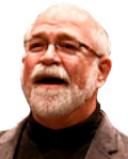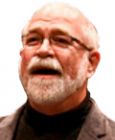Creativity
Mash-Ups and Creativity: Playing for Understanding
Of supersoakers, tires, and transformative inspiration.
Posted May 30, 2024 Reviewed by Hara Estroff Marano
Key points
- Play and creativity are close cousins.
- Playful mash-ups can have profound results.
- Play is exploration.

Here’s one slightly silly example of inadvertent inspiration. After settling in my window seat on a flight from the Seatle-Tacoma airport, I caught a brief glimpse of the tailfin of a plane parked at a nearby gateway. It featured a high-contrast portrait of a grizzled man wearing an anorak.
You may know it. I didn’t. (My excuse? I flew almost exclusively on the East coast, and this was Alaska Airlines.) My first thought. Look! They put Jerry Garcia on the stabilizer! They are so hip! Look, Jerry Garcia!
My exclamation caught the attention of a seat mate. No that’s an Eskimo, she gently corrected. And of course it was. Later, I looked it up, and found that, indeed, the smiling fur-framed face belonged not to a rocker but to a locally famous reindeer herder named Chester Seveck, an artist in his own right, but renowned for performing Inuit dances.
Well, the mistake propagated in the cabin like the wave in a stadium. The steward announced the correction on the intercom. The mash-up left listeners with a funny story to tell at my expense. Okay, okay…
But the creative process of playfully, inadvertently, or purposefully transferring one frame of reference to another has yielded dividends of discovery more far-reaching than cracking up passengers in economy class.
Fast Moving Landmark Mash-Ups
Landmark mashups, creative eureka! moments, have proven to be milestones in technology and science that have deeply modified our daily lives.
Johannes Gutenberg, the fifteenth century German goldsmith who transferred skills in block printing and copperplate etching to his invention of moveable type, revolutionized the course of the world’s intellectual, political, and technological history, because those who played with ideas could circulate them thereafter more widely and at unprecedented speed.
Or think of a mash-up of chemistry and engineering. In the 1830s, a self-taught chemist named Charles Goodyear who was dissatisfied with the sticky natural latex used in life preservers and tire tubes, experimented with sulfur compounds to produce a durable rubber. Fifty years later, bicycle makers took note by adding “rubberized wheels,” pneumatic tires, to the bikes that with good reason had beforehand been called “boneshakers.” Car tires followed not long behind. And soon two tinkering bicycle mechanics from Dayton, Ohio, would be leveraging skills in metallurgy and mechanical engineering to usher in an era of powered flight.
From Near-Earth Orbit to Play and Back Again
Technological innovation can also double back to play and then play can feed back into invention. A favorite example: When the Tuskegee Institute-trained NASA engineer Lonnie Johnson, hard at work in his lab, playfully spritzed a jet of water from his prototype satellite heat pump, he hit on the idea of a powerful squirt gun. After his daughters thought his prototype (complete with water chamber and air-pressure reservoir) was a blast, he took his brainstorm, the Power Drencher, to the toy fair in New York.
The successor toy, known as the Supersoaker, became a billion-dollar seller, and in 2015 was inducted into the National Toy Hall of Fame. Johnson also invented the Nerf Gun, which in turn engendered a Nerf rocket launcher.
What goes around sometimes comes around. His playful brainstorms funded his continuing research into thin film batteries, compressed gas storage systems, and fuel cell technologies that could transform energy use. His company holds more than a hundred patents.
From Dis-Assembly Line to Assembly Line
We think of Henry Ford when we think of the assembly line process for mass production, but the innovation belongs to Ransome Olds (remember Oldsmobiles, baby boomers?) whose stationary assembly line inspired the moving version still employed today. But both innovations depended on the precursor in the meat-packing industry that should, perhaps, better be called a dis-assembly line. Picture the overhead pulley system that moved suspended carcasses for sequential tasks from meat-carver to meat-trimmer instead of chassis from specialized but unskilled installer to the next line worker. Henry Ford found his idea for an assembly line hanging upside down.
Everyday Mash-Ups
We now utilize a cascade of mash-ups. Clock-radios, for example, and Swiss army knives—it’s a knife, it’s a corkscrew, it’s a fish-scaler. No! It’s a magnifying glass!
We routinely carry another sublimely mashed-up innovation in our pockets and purses. Besides connecting our calls, portable cell phones now also derive square roots, play podcasts, transcribe voices, send email, browse the internet, time a footrace, and take snapshots and archive them. The technology is astonishing. The way we have routinized innovation is even more so.
Exploration, Combination, Transformation
In this connection I commend to you an interview with British polymath Margaret Boden, who had trained in neuroscience, artificial intelligence, cybernetics, medicine, linguistics, and philosophy. She explored the power of altering perspective and combining different sources of inspiration.
Uniquely qualified, she cites fascinating examples of consequential mash-ups. Squint a bit or leave your distance glasses aside and you may have discovered the roots of Impressionist painting, the genres of artists with notoriously poor vision, like Mary Cassat, Vincent Van Gogh, and Edouard Degas. William Harvey thought of the heart as a pump to help him understand the circulation of blood. And Ernst Rutherford, Boden reminds us, imagined the atom as a solar system. Their inspirations and others like them transformed our understanding.
Less consequentially and more playfully. some confectioner thought of enclosing peanut butter in a chocolate cup. Some forgotten kids put skate wheels on orange crates. Parodies are mostly mash-ups. Music sampling is all mash-up. A stick in the hands of a kid becomes a light-sabre. Creativity and play are close relatives. Both nurture inspiration.
I’ll leave the concluding exhortation to Margaret Boden, O.B.E. “One of the great things about play is that you have the freedom to try something out, and if it does not work, you go on to something else. We are prepared to put up with this in a five-year-old, but we are not prepared to put up with it in a twenty-five-year-old. But we should.”
References
"A Polymath at Play: An Interview with Margaret Boden," American Journal of Play, interview by Scott G. Eberle, vol. 7, no. 1, pp. 1-19.




